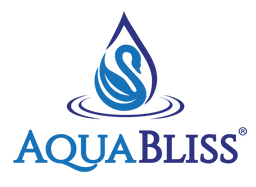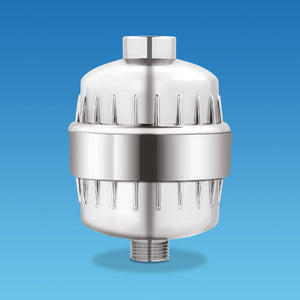If there's one thing that everybody knows about personal hygiene, it's that water pressure in the shower matters. Low water pressure in your shower can make it difficult to wash your hair properly and achieve a thorough level of cleanliness. A low flow shower head can sometimes be the culprit behind weak water pressure, but there are ways to address this issue.
If you're stuck with a low-pressure bathroom appliance, you've probably searched the Internet for "how to increase water pressure in the shower" time and time again - to no avail.
If you still haven't found the right solution to actually increase water pressure in your shower, then you've come to the right place. We'll not only help you assess the water flow rate of your shower head to figure out if you are experiencing low water pressure, but we'll also offer a wide range of helpful solutions to fix low water pressure issues.
We'll even recommend a range of products that can solve your pressure problems for good. Read on below to learn all of the tips and tricks so you never have to search "how to increase water pressure in the shower" again.
Do I Have Low Water Pressure in the Shower?

Does the hot water coming from your shower hose seem to be flowing weakly? Has it become significantly more challenging to wash your hair and body thoroughly?
It's possible that you could be dealing with low water pressure in your house? Luckily, it's easy to fix the flow of your hot water and get back to showering normally again. But the first step is determining if the water pressure is actually as low as you think.
How to Test Shower Water Pressure
Figuring out if you have low water pressure in shower is a very simple task. All you'll need is a bucket and a timer. Ideally, the bucket should measure one liter in volume.
Just place the bucket under the faucet, turn it on, and use your timer to determine how long it takes to fill up all the way. If your appliance doesn't manage to produce one liter of fluid in six seconds or less, the water pressure is lower than it should be.

14 Ways to Increase Your Shower's Water Pressure
You don't need to know how to perform miracles in order to fix low water pressure in shower appliances, and you don't need assistance from a professional plumber. Weak water pressure can be frustrating, but it’s often easy to address on your own.
If you're wondering how to get better water pressure in the shower, just try these simple solutions all by yourself and you should be on your way to a satisfying shower experience in no time.
1. Clean Your Shower Head

The most common reason for water pressure that is lower than usual is a dirty shower head. Mineral deposits and other contaminants in your plumbing system can build up in appliances over time and cause blockages, negatively affecting the flow of liquid.
Luckily, cleaning this device is a very easy process. Simply soak the product in vinegar overnight to ensure that the insides are thoroughly cleaned. Rinse it off and reattach it in the morning, and be sure to run the tap for a minute to expel any lingering vinegar from the inside. If you're wondering how to get better water pressure in the shower, this cleaning method can often make a significant improvement.
2. Check for a Flow Restrictor
Check to see if your device is equipped with a flow restrictor before taking any other measures. Flow restrictors are devices that sit in the plumbing and control the rate at which liquid flows through the pipes. If you're wondering how to increase water pressure in shower, addressing the flow restrictor is a good starting point.
A flow restrictor can decline over time, causing problems with water pressure. Removing or replacing your flow restrictor is an easy solution.
3. Replace the Shower Head
One of the easiest ways to increase water pressure in shower appliances is to get a new shower head. Most showerhead manufacturers don't consider how their products affect shower water pressure, so if you have a regular showerhead, you may have problems with low water pressure in shower.
You could even have a low-pressure shower head installed and not even know it! The solution is simple: switch to a new product with adequate shower head pressure, such as the TurboSpa shower head from AquaBliss.
4. Check for Kinks
If there are any kinks present in the individual shower hose that bring hot and cold fluid to your shower, it's going to reduce the velocity at which it can flow, compromising the water pressure, especially causing low water pressure in the shower.
Knowing how to increase water pressure in shower is crucial for a satisfying shower experience. Manually straighten out the hose to remove any kinks, and the problem should be resolved.
5. Check the Curbside Main Shutoff
The main valve controlling the water line leading to your home will have a huge effect on how well your restroom appliances function. Most water lines are equipped with a shutoff valve somewhere outside the home that can be switched on and off by the homeowner.
When the valve is closed, the water line will be blocked. But when this water valve is open, it allows liquid to pass freely through your home's galvanized pipes so that your shower functions normally. Check to be sure that the shutoff valve is completely open for maximum water flow.
6. Replace Your Single-Handle Volume Control

If the water regulator or diverter on your shower apparatus is several years old, its quality has likely declined with age, and it could be causing your appliance to run inefficiently. Replacing this with a new model could help solve any problems you may be having, such as increasing water pressure in shower.
7. Open Up In-Line Shutoff Valves
In order for your home plumbing system to run smoothly, the inline shutoff valve needs to be fully open. If this water valve becomes closed or obstructed, it's going to cause problems with your bathroom appliances.
Luckily, the solution is easy. Just locate the shutoff valve and pull the red lever all the way until the valve is fully open.
8. Check for Leaks

Leaks are the kiss of death for any plumbing apparatus. Leaks are notorious for negatively affecting water pressure in home appliances. Not only that, but leaks can also cause your utility bills to skyrocket.
You could be using far more fluid than you know because it's all escaping through leaks instead of through your showerhead, and this will certainly show up on your water bill.
Have a professional seal up any leaks that are present, and it should improve the flow of fluids significantly.
9. Install a Shower Pump
Installing a new shower pump is a great way to increase pressure in your bathroom appliance. A shower pump is a device that makes fluid move through the water pipes with greater force.
If your house is equipped with a broken or faulty pump, installing a new shower pump should solve the problem.
10. Install a Pressurized Unvented Cylinder
For a more labor-intensive solution, consider switching from a traditional reservoir tank to a pressurized unvented cylinder. This tank supplies an added boost of pressure from the start of distribution, which will be helpful if you're experiencing weak-flowing shower activity.
11. Install an Electric Shower With a Cold Water Accumulator Tank
To circumvent plumbing problems altogether, you can instead opt to purchase an electric shower. This device operates from its own accumulator tank, so you don't have to worry about blockages in the pipes.
Purchase a device from a reputable source and consult the user manual for installation instructions.
12. Install a High-Pressure Shower Head
If you have low water pressure in your shower, one of the most effective methods to fix it is to deliberately install a shower head that uses high pressure. This is a great way to directly control your shower head pressure, and there are plenty of excellent products to choose from.
Not all shower heads are of the same quality, so be sure to get your product from a reputable seller like AquaBliss. Our high shower head pressure products are a simple and inexpensive option that is sure to solve your low shower water pressure troubles.
13. Turn Off Other Appliances
Did you know that using other appliances in your house will affect your water usage? In fact, if you are running multiple appliances at the same time, it can have a negative effect on your shower's flow rate. Be sure to turn off any other large appliances in your house before showering.
14. Take Your Shower During Off-Hours
When many people in your area are showering all at once, it can overwhelm your local water supply, leading to low pressure. If possible, showering at unpopular times, such as early in the morning or late at night, can ensure that better pressure is available.
What Causes Low Water Pressure in the Shower?

There are plenty of factors that can lead to low water pressure in the shower, but the most common is probably a blocked showerhead. Cleaning the fixture can improve water pressure by removing mineral deposits and scale buildup that tends to collect in shower heads over time. If you’re wondering how to increase water pressure in shower, start by checking and cleaning your showerhead.
Your water heater could also be the culprit. If your heating device is not running properly, it can cause lower pressure in your plumbing system. Have a qualified plumber inspect your water heater to be sure it is working normally and complies with the standards set forth by the National Energy Act.
If it doesn't comply with these regulations, you'll need to find a replacement to avoid trouble with local authorities. It is also possible that your home is located in a low water pressure area with limited access to water supply.
If you live in a rural area and your access to the water supply is restricted, or the supply reservoir you use is shared with a large geographical region, this can also make your water pressure low.
Take Control of the Water Flow in Your Shower Today!
Now that you've seen all of our useful tips and tricks for fixing low water pressure shower fixtures without professional help from your local provider of plumbing services, it's time to fix the water pressure in your shower for good.
If you're wondering how to increase shower water pressure, try each simple fix above until you increase water pressure successfully, or contact our team at AquaBliss to learn more about our water pressure-conscious showerhead options.









